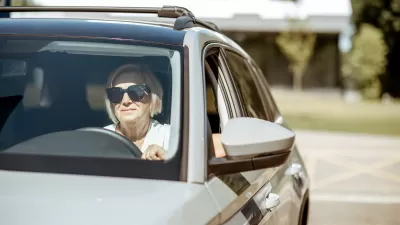Reflecting a growing desire by seniors to live at home and stay in their lifelong neighborhoods, so-called ‘senior villages” are marshaling support and resource networks so seniors around the country can age in place.
“88 percent of those 65 and up, according to a recent AARP study — prefer to stay in their residence for as long as possible,” according to a recent article by Tara Bahrampour.
That preference has lead an increasing number of seniors to embrace the “grass-roots movement of senior villages,” writes Bahrampour. For a membership fee, a senior village “coordinates volunteers to provide older residents with services that help them live independently.” Services include transportation, grocery delivery, and lawn mowing, for instance.
The Washington D.C. area is leading the new movement, “going from about five in 2010 to 40 that are up and running or in development,” but the movement has also met widespread success: “Nationally, the number of villages registered with the network has increased from 50 in 2010 to 124 this year, with more in development. The first, in Boston, opened in 2002.”
In a telling statement about the inability of most built environments to support aging populations, the executive director of Mount Vernon at Home, Barbara Sullivan, describes how important a draw mobility services are for senior village programs: “Transportation is 80 percent of what we do…Our county can’t provide it. We don’t have walkable communities, so most of our services involve driving people to medical appointments, grocery stores and social events.”
FULL STORY: Through a growing number of senior villages in the D.C. area, aging in place becomes easier

Alabama: Trump Terminates Settlements for Black Communities Harmed By Raw Sewage
Trump deemed the landmark civil rights agreement “illegal DEI and environmental justice policy.”

Study: Maui’s Plan to Convert Vacation Rentals to Long-Term Housing Could Cause Nearly $1 Billion Economic Loss
The plan would reduce visitor accommodation by 25% resulting in 1,900 jobs lost.

Planetizen Federal Action Tracker
A weekly monitor of how Trump’s orders and actions are impacting planners and planning in America.

Waymo Gets Permission to Map SF’s Market Street
If allowed to operate on the traffic-restricted street, Waymo’s autonomous taxis would have a leg up over ride-hailing competitors — and counter the city’s efforts to grow bike and pedestrian on the thoroughfare.

Parklet Symposium Highlights the Success of Shared Spaces
Parklets got a boost during the Covid-19 pandemic, when the concept was translated to outdoor dining programs that offered restaurants a lifeline during the shutdown.

Federal Homelessness Agency Places Entire Staff on Leave
The U.S. Interagency Council on Homelessness is the only federal agency dedicated to preventing and ending homelessness.
Urban Design for Planners 1: Software Tools
This six-course series explores essential urban design concepts using open source software and equips planners with the tools they need to participate fully in the urban design process.
Planning for Universal Design
Learn the tools for implementing Universal Design in planning regulations.
Caltrans
Smith Gee Studio
Institute for Housing and Urban Development Studies (IHS)
City of Grandview
Harvard GSD Executive Education
Toledo-Lucas County Plan Commissions
Salt Lake City
NYU Wagner Graduate School of Public Service





























